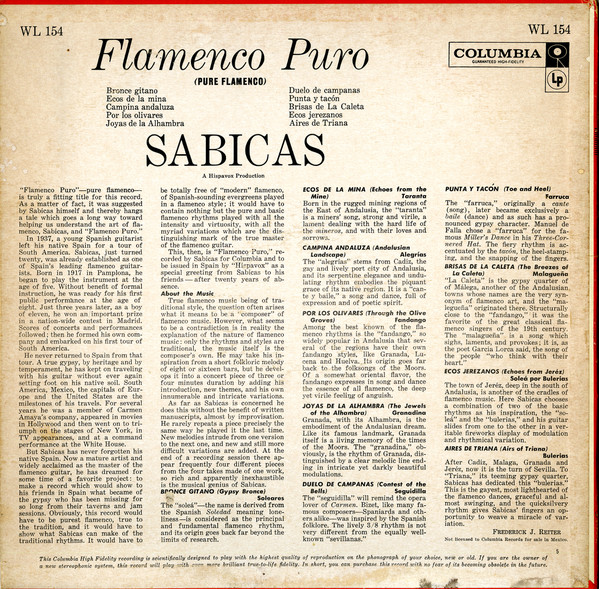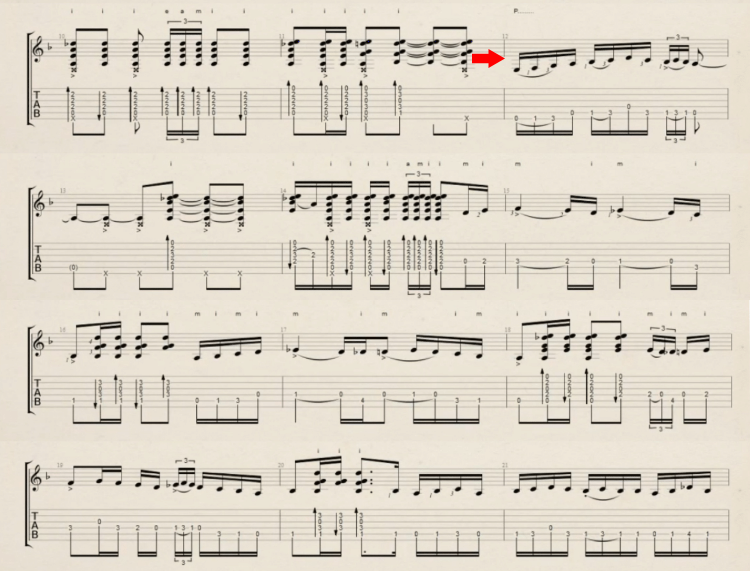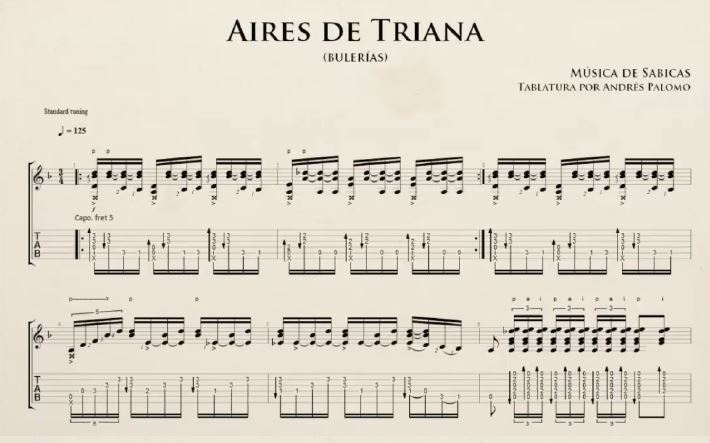|
kitarist -> RE: alzapua (Dec. 22 2020 19:51:37)
|
quote:
My confusion on the bulerias is because it is available for download but looking at the download it does not list a bluerias.
You should be able to tell by ear, but also you can just look up the original LP. It is the last piece on B side of the 1959 LP, and yes there is only that one bulerias. Which is classified in the notes in the back as bulerias (bottom right in the image):

As to the falseta Ricardo is referring to, it is probably this, starting where the red arrow is pointing (EDIT No, see instead other image below). A few mental adjustments - the 16th notes would be the 8th notes Ricardo talks about - this transcription is weird in that it is in 3/4 but the 3 spans 6 of the flamenco compas beats (so two 3/4 measures span a 12-compas).
Also some of the right-hand fingering indications are probably wrong in the second half - where it asks you to do im alternation - that should still likely be just thumb work.

EDIT: No, it's the first few measures from the very beginning, sorry for the confusion:

Images are resized automatically to a maximum width of 800px
|
|
|
|



